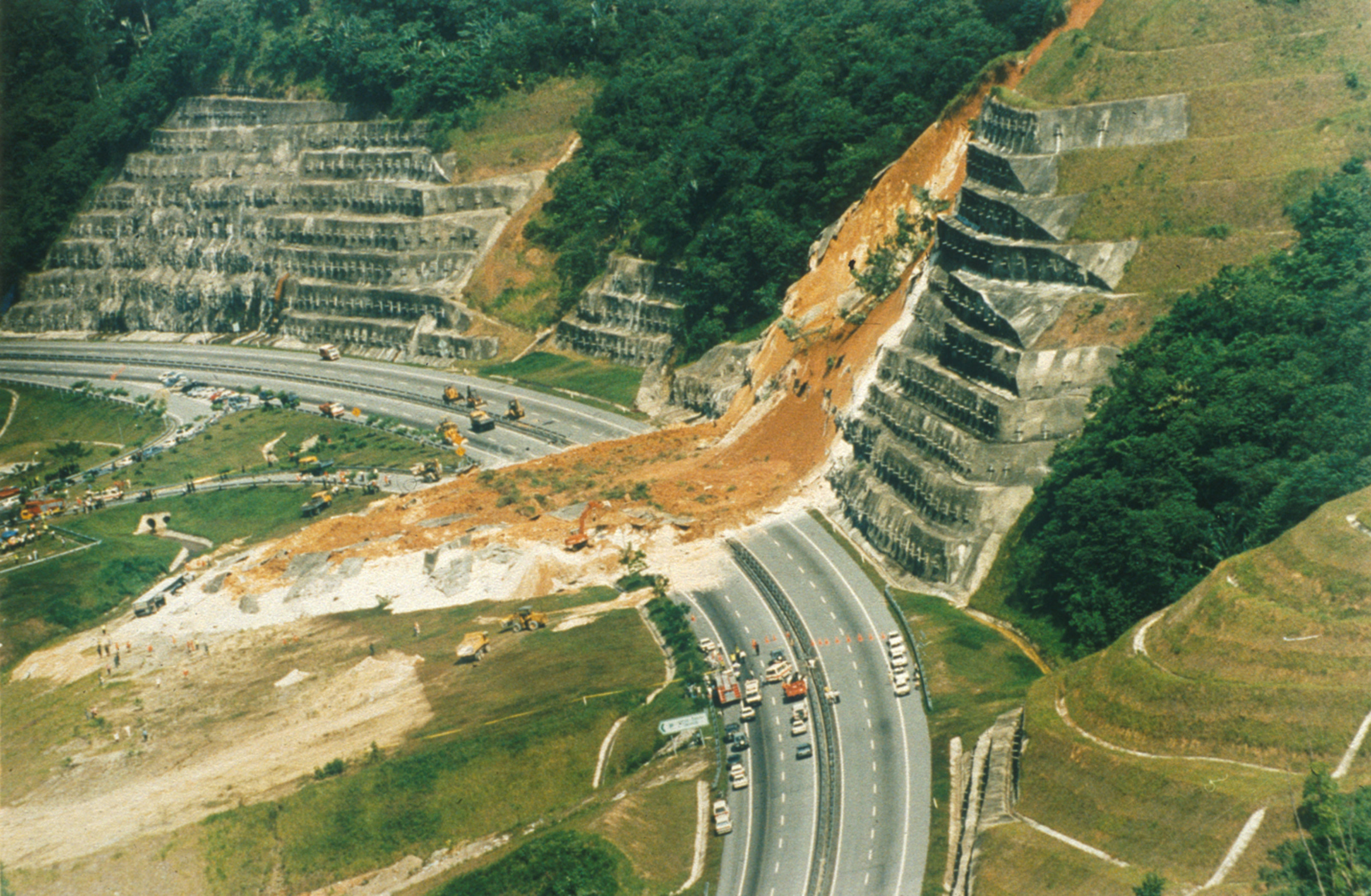- NGI /
- Projects /
- ICG - International Center for Geohazards /
- SP 8 - Slide dynamics
SP 8 - Slide dynamics
Gravity mass transport represents a significant hazard on land as well as in the ocean or in lakes.

Gravity mass transport represents a major hazard on land as well as in the ocean or in lakes. In order to be able to predict possible runout distances and the forces exerted on structures (obstacles) in the path of the slide, there is a need for a better understanding of the flow dynamics including more advanced numerical models. It is also important to increase our knowledge of how "solid" materials are disintegrating into "flowing" materials.
Therefore, a major challenge is to be able to predict the possible flowing behavior of a certain type of material based on its geotechnical properties. We foresee a stepwise development of our work and start where the group has been strongly involved for the last period and has identified highly needed "improvements".
Figure 1. Left: Snapshot of debris flow front in subamarine laboratory experiment. Right: The experimental flume at St Anthony Falls Lab seen from above.
Themes in 2007
- modeling and understanding of submarine and subaerial debris flows - based on experimental studies
- subaerial debris flows and landslides - dynamics, and predictions
- program development - numerical models for sub-aqueous and sub-aerial debris flows
Gravity mass transport represents a major hazard on land as well as in oceans and lakes. In order to be able to predict possible runout distances and the forces exerted on structures (obstacles) in the path of the slide, there is a need for a better understanding of the flow dynamics, including more advanced numerical models. It is also important to increase our knowledge of how "solid" materials are disintegrating into "flowing" materials. Thus, a major challenge is to be able to predict the possible flowing behavior of a certain type of material based on its geotechnical Properties.
Our work combines a basic understanding of the physics involved and numerical simulations with field observations and experiments in the laboratory. In 2006 a series of comparable sub-aerial and sub-aqueous experiments were performed at the St Anthony Falls Lab in Minneapolis. These experiments provide data that clarify the differences and similarities of how mass moves underwater compared to land.
Objectives and results
Our objective is to increase our knowledge of flow regimes of debris flows of varying compositions. Although several numerical models for mass movements have been developed and presented, there is an ongoing discussion on which concepts and models should be applied to the different types of material and flow regimes. Roughly, the approaches can be divided into a granular approach versus a viscoplastic approach.
A main goal for our work is to develop models that are able to handle situations with variable mixtures of granular versus cohesive materials. Analysis of field and experimental data will be an important tool in this process.
Our experimental studies of debris flows represent mass movements on the bottom of the seafloor, as well as debris, flows on land. These experiments help us understand how sub-aqueous mass movements can move over large distances on very low slopes, how deep water sandy bodies are generated as well as to prevent geohazards connected to oil and gas installations.
The main results from the experimental studies until now are summarized below:
A clay-sand mixture stratifies into three layers immediately after release:
- turbidity current on top
- a nearly laminar layer of moving clay and fluidized sand
- settled sand layer at the bottom
Hydroplaning: The moving mass develops a hydroplaning head, moving 3 times faster than the rest of the debris flow body.
Stretching: The fast-moving head and the slower-moving body result in stretching of the mass and a change (softening) of the geotechnical properties due to reduced friction under the hydroplaning head, shearing of the mass and water intrusion from the cushion underneath. This is again believed to facilitate the fast movement and long runout and may result in outrunner blocks.
Activities
- Theme 1: Fluid and granular flow Dynamics
- gravity mass flows and the origin of deep water sandy bodies. Ph. D. student: Hedda Breien - Theme 2: Landslide Characterization in Central America
- with particular emphasis on Nicaraguan cases. Ph. D. student: Graziella Devoli - Theme 4: Flow modeling of submarine slides (part of the Euromargin program)
- Publications - Papers and presentations
National and International Cooperation
- St. Anthony Falls Laboratory, University of Minnesota, USA
- Department of Civil and Environmental Engineering and the Department of Geology, University of Illinois, USA
- Earth and Ocean Sciences Division, Duke University, USA
- Simula Research Senter, Oslo, Norway
- Department of Earth and Ocean Sciences, University of British Columbia
- Department of Geosciences, University of Oslo
- Norwegian Geotechnical Institute (NGI)
Staff
Key personnel
- Anders Elverhøi
- Fabio V. De Blasio
- Dieter Issler
- Peter Gauer
- Fridtjov Irgens
Ph.D-students
- Hedda Breien
- Graziella Devoli